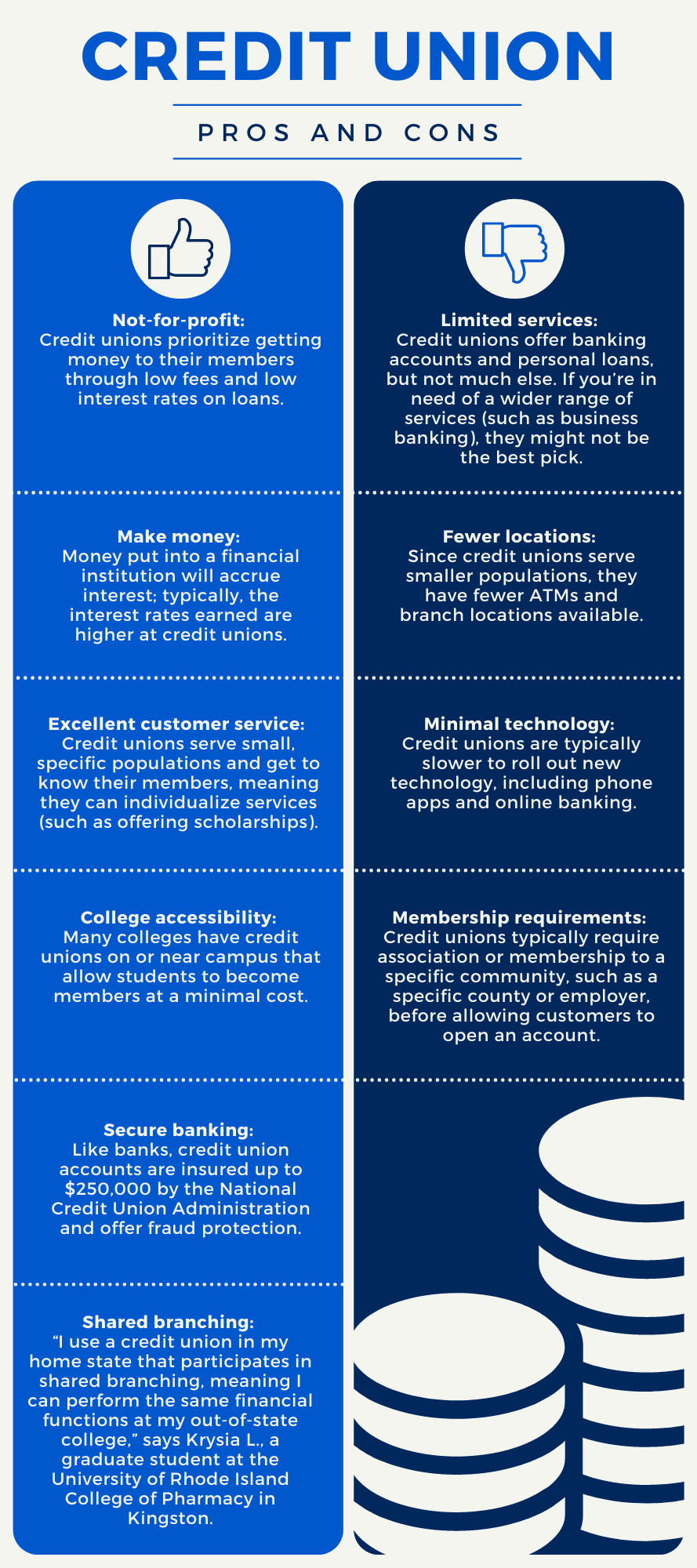Credit Unions in Wyoming: Comprehensive Financial Solutions and Participant Conveniences
Wiki Article
The Ultimate Overview to Comprehending Lending Institution
Credit scores unions stand as special economic entities, rooted in concepts of common assistance and member-driven procedures. As we browse via the intricacies of credit report unions, an informative trip waits for to drop light on these member-focused organizations and exactly how they vary from standard financial institutions.What Are Debt Unions?
Credit rating unions are member-owned banks that offer a variety of financial solutions to their participants. Unlike standard financial institutions, cooperative credit union run as not-for-profit organizations, implying their main focus gets on offering their participants instead than making best use of earnings. Participants of a lending institution typically share a common bond, such as benefiting the very same employer, belonging to the same community, or being part of the same organization.One of the key advantages of lending institution is that they usually use higher rates of interest on cost savings accounts and lower rate of interest prices on lendings contrasted to banks. This is because credit rating unions are structured to benefit their members directly, permitting them to pass on their revenues in the type of far better rates and less fees. In addition, lending institution are understood for their individualized customer care, as they prioritize developing partnerships with their members to recognize their unique monetary demands and goals.
Background and Advancement of Lending Institution

The roots of member-owned financial cooperatives, recognized today as credit rating unions, trace back to a time when communities looked for choices to standard banking institutions. The principle of lending institution come from the 19th century in Europe, with Friedrich Wilhelm Raiffeisen usually attributed as the pioneer of the participating financial motion (Cheyenne Federal Credit Union). Raiffeisen founded the initial acknowledged lending institution in Germany in the mid-1800s, emphasizing area support and self-help concepts
The development of cooperative credit union continued in The United States and Canada, where Alphonse Desjardins established the initial cooperative credit union in Canada in 1900. Shortly after, in 1909, the initial U.S. cooperative credit union was developed in New Hampshire by a group of Franco-American immigrants. These early cooperative credit union run on the fundamental concepts of common support, autonomous control, and member possession.
Over time, credit rating unions have actually expanded in popularity worldwide because of their not-for-profit framework, concentrate on serving participants, and offering competitive economic product or services. Today, cooperative credit union play an important function in the economic industry, supplying community-oriented and accessible banking choices for people and businesses alike.
Subscription and Eligibility Requirements
Subscription at a cooperative credit union is normally restricted to people fulfilling specific eligibility standards based on the establishment's beginning concepts and regulative needs. These standards typically consist of aspects such as geographic location, employment condition, membership in particular organizations, or affiliation with particular groups (Credit Unions Cheyenne). Credit scores unions are understood for their community-oriented method, which is shown in their membership requirements. For instance, some lending institution may only offer people that live or work Hybrid Line of Credit in a particular location, while others might be customized to workers of a certain company or participants of a certain association.In addition, lending institution are structured as not-for-profit organizations, meaning that their main objective is to serve their participants rather than create revenues for investors. This concentrate on participant solution frequently converts into even more customized interest, reduced charges, and affordable rates of interest on lendings and financial savings accounts. By meeting the eligibility criteria and coming to be a member of a lending institution, individuals can access a variety of economic product or services tailored to their certain demands.
Services and Products Provided
One of the crucial aspects that establishes credit score unions apart is the diverse range of monetary services and items they provide to their participants. Credit score unions usually provide typical banking solutions such as cost savings and examining accounts, fundings, and credit history cards.
Moreover, cooperative credit union typically provide practical online and mobile financial choices for participants to easily manage their funds. They may use perks such as common branching, permitting members to access their accounts at various other lending institution throughout the nation. Some credit history unions additionally provide insurance coverage items like home, life, and auto insurance to help members secure their properties and loved ones.
In addition to monetary solutions, credit unions frequently participate in neighborhood outreach programs and economic education and learning initiatives to support their members in accomplishing their monetary objectives.
Benefits of Financial With Lending Institution
When thinking about economic institutions, checking out the benefits of banking with credit score unions reveals one-of-a-kind benefits for participants looking for customized solution and affordable rates. Unlike big financial institutions, credit scores unions are member-owned and focus on structure strong connections with their participants. Overall, banking with a credit score union can provide a much more individualized, cost-effective, and member-centric financial experience.Final Thought

Debt unions are member-owned financial organizations that use an array of financial services to their members. The concept of credit score unions stem in the 19th century in Europe, with Friedrich Wilhelm Raiffeisen frequently credited as the pioneer of the cooperative financial motion.The advancement of credit unions continued in North America, where Alphonse Desjardins established the very first credit report union in Canada in 1900. Credit unions generally offer conventional banking services such as savings and checking accounts, fundings, and credit score cards.When taking into consideration economic establishments, discovering the benefits of banking with credit report unions exposes distinct benefits for members looking for personalized service and affordable prices.
Report this wiki page